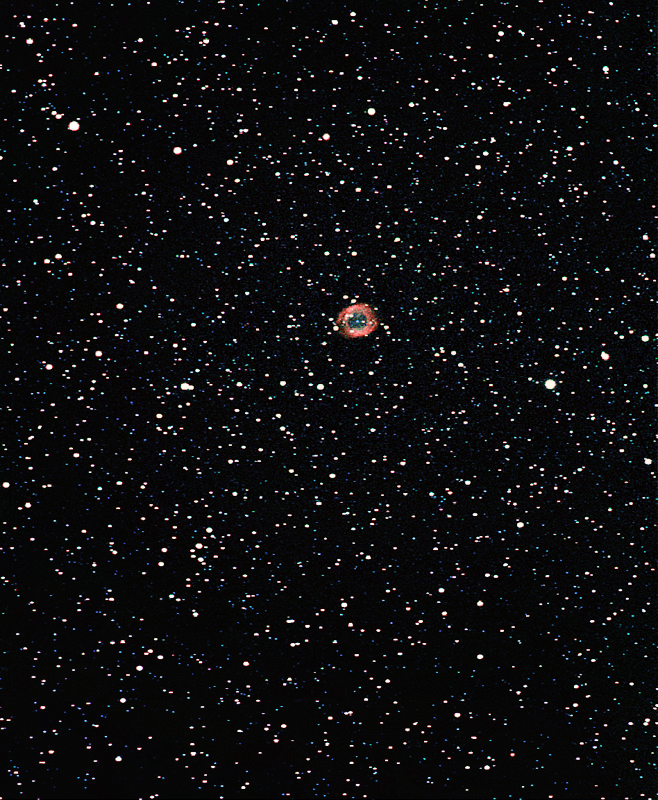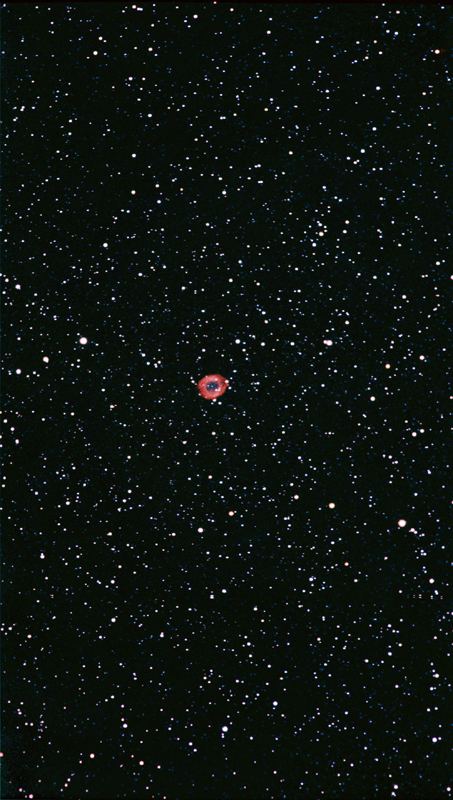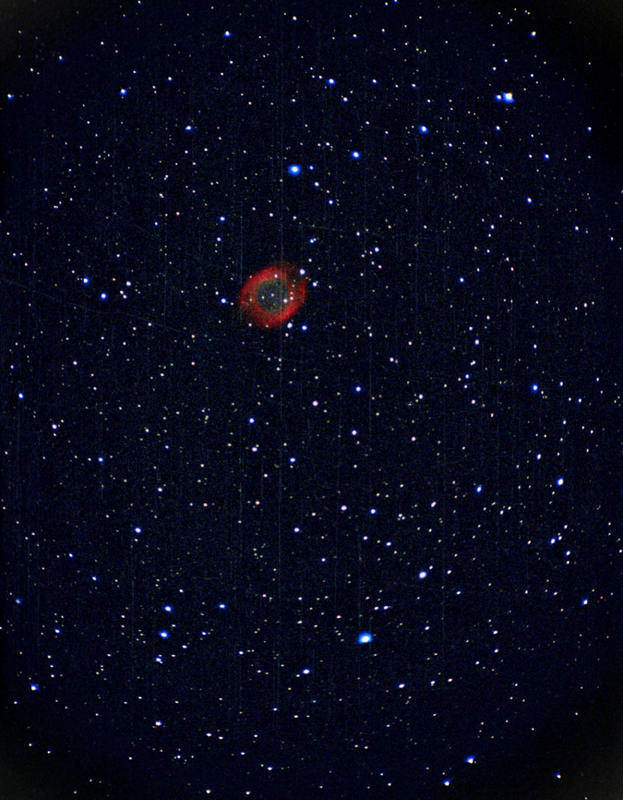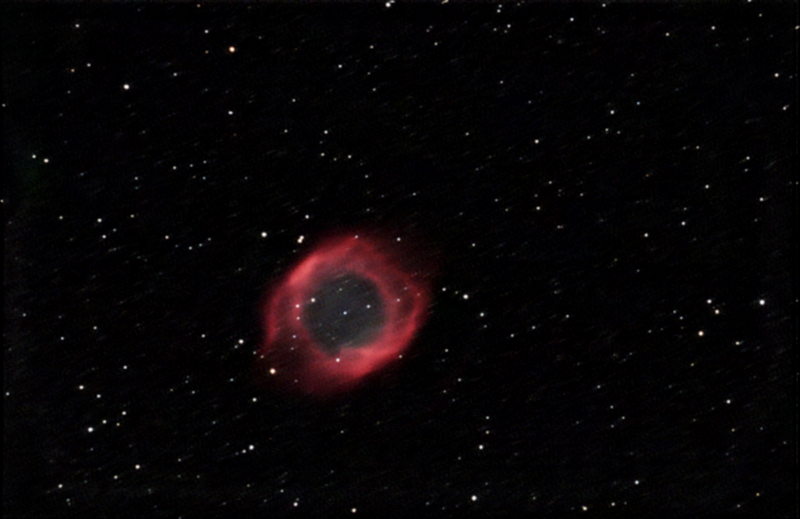
30 minutes exposure. Fuji Provia 400 wide format slide film.
300mm f/2.8 Canon lens.

One of the largest and brightest planetary nebula, the Helix nebula paradoxically has a reputation for being a very difficult object to observe visually. This is an undeserved reputation. Under a dark sky it is actually visible to the naked eye. For many years, some friends and I would use the naked eye visibility of the Helix as a guide to how dark the skies were, particularly while observing the eta aquarid meteor shower. Binoculars will show the nebula as a diffuse patch of light, while with a telescope, it is necessary to use low magnification for a good view due to the large size of the nebula. In a 6" telescope, the nebula appears as a large, diffuse patch with a slightly darker centre. In a 12", it is clearly annular with a number of faint stars imbedded within it.


45 minutes exposure. Fuji Super HG II 400 film. 5" f/5 refractor at prime focus.
The Helix nebula has long been one of my favourite objects. One of my most vivid memories was with a 17.5" telescope under 6.8 skies. It appeared as a large, ghostly annulus studied with faint stars. The nebula also exhibits a strong responce to an OIII filter.
